Hiking Dress How To Choose Right
When we talk about hiking, the immediate thought often revolves around the right shoes or backpacks. However, how often do we consider the importance of a hiking dress? Yes, you read that right. The clothes you wear can make or break your hiking experience.
Why Hiking Dress Matters
Introduction
When planning a hiking trip, the dress code might not be the first thing on your mind, but it should be. Hiking attire, particularly hiking dresses, plays a crucial role in ensuring comfort, safety, and enjoyment on the trail. This comprehensive guide delves into why selecting the right hiking dress matters, focusing on comfort, material choice, protection from the elements, and other essential considerations.
Comfort on the Trail
The significance of comfort while hiking cannot be overstated. Unlike everyday clothing, hiking dresses are specifically designed to enhance mobility and minimize discomfort:
- Mobility: Hiking involves various movements, from climbing steep inclines to navigating over or around obstacles. A well-chosen hiking dress offers the flexibility and freedom of movement necessary for these activities without restricting your actions.
- Chafing Reduction: Regular clothing often causes chafing and irritation when worn for prolonged periods of vigorous activity. Hiking dresses are crafted to prevent chafing, using smooth seams and materials that move easily against the skin.
Material Matters
The fabric of your hiking dress is a pivotal factor that affects not just comfort but also the functionality of the garment:
- Polyester: Favoured for its moisture-wicking capabilities, polyester keeps you dry by drawing sweat away from the body. It’s also lightweight and resilient, ideal for enduring the rigors of the trail.
- Nylon: This material stands out for its exceptional strength and tear resistance, offering durability in challenging environments. Its light weight and potential for water resistance add to its appeal for hikers.
- Merino Wool: Best known for its ability to regulate temperature, merino wool is perfect for maintaining comfort in both hot and cold conditions. Its natural odor-resistance is a bonus for multi-day treks.
- Cotton: Though generally not recommended for intense hikes due to its moisture retention, cotton can be comfortable for shorter, less demanding trails or when blended with synthetic fibers.
Protection from the Elements
The unpredictability of weather and environmental conditions makes protection a key feature of hiking dresses:
Sun Protection
- UPF Rating: A high UPF rating is essential for shielding the skin from harmful UV rays, especially in environments where sun exposure is intense.
- Considerations: Even in cloudy conditions, UV radiation can penetrate, making a dress with a good UPF rating a wise choice year-round.
Rain and Moisture
- Water Resistance vs. Waterproof: Depending on the expected weather, you might need a water-resistant dress for light rain or a fully waterproof one for heavy downpours. The ability to dry quickly is also crucial to avoid discomfort and potential health issues.
Wind
- Wind Resistance: A wind-resistant dress protects against the chilling effects of wind, preserving body warmth and comfort during breezy conditions.
- Material and Weave: The effectiveness against wind often depends on the fabric’s thickness and the tightness of its weave. Some dresses also include a special lining for added protection.
Temperature Regulation
- Insulation: For cold-weather hiking, insulated dresses provide essential warmth without adding excessive bulk.
- Breathability: In warmer climates, breathability becomes a priority. Fabrics that allow air circulation and sweat evaporation help maintain a comfortable body temperature.
Insects and Other Hazards
- Insect Repellency: Dresses treated with permethrin or similar repellents offer an added layer of protection against mosquitoes, ticks, and other pests.
- Abrasion Resistance: The durability of a dress against abrasion and wear is crucial for hikes that involve contact with rough terrain or vegetation.
Key Factors to Consider When Choosing a Hiking Dress
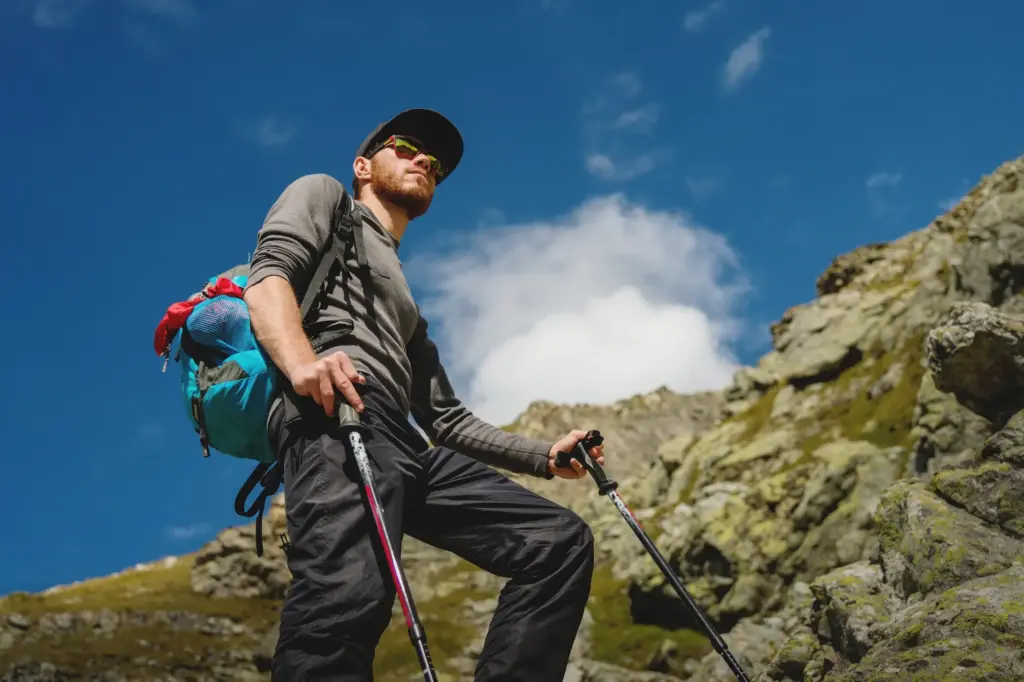
Selecting the perfect hiking dress involves a blend of functionality, comfort, and personal style. Whether you’re traversing rugged landscapes or enjoying a serene trail, the right dress can significantly impact your hiking experience. This guide explores essential factors to consider, ensuring your next outdoor adventure combines practicality with pleasure.
Material: The Foundation of Comfort and Durability
Breathability
- Importance: A breathable dress prevents the uncomfortable buildup of moisture, keeping you dry and comfortable throughout your hike. It’s essential for maintaining body temperature and avoiding overheating.
- Recommended Materials: Fabrics like merino wool and certain synthetic fibers excel in moisture-wicking and breathability. These materials draw sweat away from the skin, allowing it to evaporate quickly.
Durability
- Need for Toughness: The unpredictable nature of outdoor trails demands attire that can withstand potential abrasions and tears. Your dress should be a reliable companion, capable of enduring the natural wear and tear of hiking.
- Fabric Choices: Opt for robust materials such as nylon or reinforced polyester, known for their resistance to abrasion and ability to withstand rough encounters with nature.
Fit & Form: Balancing Comfort and Style
Fit Considerations
- Comfort vs. Safety: The ideal hiking dress strikes a balance between being comfortably loose for ease of movement and snug enough not to snag on branches or obstacles.
- Body Shape Accommodation: Look for designs that flatter and fit your body type, enhancing mobility without compromising on style.
Length and Design
- Length Options: Your choice between shorter or longer dresses should reflect the trail’s demands and your comfort levels. Shorter lengths offer greater freedom of movement, while longer dresses provide added protection.
- Neckline and Sleeves: Consider higher necklines for extra sun protection and longer sleeves for defense against the elements and insects. Ensure these features do not restrict your range of motion.
Adjustability
- Customizable Features: Adjustable elements like waistbands or drawstrings allow you to modify the fit according to your current layering needs, offering flexibility across different hiking conditions.
Season-specific Considerations: Ensuring Year-Round Enjoyment
Spring and Autumn
- Layering Strategy: These seasons call for adaptable clothing. Opt for dresses that facilitate easy layering, using materials like merino wool that regulate temperature well.
- Weather Preparedness: Given the propensity for rain, water-resistant or quick-drying fabrics are advisable to keep you dry and comfortable.
Summer
- UPF Protection: Protecting yourself from harmful UV rays is crucial. Seek out dresses with a high UPF rating to minimize sun exposure.
- Light and Airy Fabrics: Choose lightweight, airy materials that encourage air circulation to help you stay cool under the summer sun.
Winter
- Warmth and Insulation: Consider dresses with thermal lining or those compatible with thermal layers underneath. The fabric should help trap heat to keep you warm in colder conditions.
- Resistance Features: Look for dresses with water and wind resistance to combat the harsher elements of winter weather, ensuring comfort and protection against snow and cold winds.
Product Review: Exploring the Best Hiking and Outdoor Gear

When it comes to outdoor adventures, having the right gear can make all the difference. Whether you’re hiking through rugged trails, fishing in remote lakes, or simply enjoying the great outdoors, the comfort, functionality, and durability of your attire play a pivotal role in your experience. Below, we review five popular products designed for outdoor enthusiasts, highlighting their pros and cons to help you make an informed decision.
Men’s Hiking Gear Review
1. TBMPOY Men’s Hiking Shirts
Pros:
- Made from 100% Polyester, offering lightweight and dry-fit qualities that wick moisture away, ensuring cool comfort.
- UPF 50+ sun protection fabric shields the skin from harmful UVA and UVB rays.
- Raglan sleeves and flatlock seamlines design enhance movement range while minimizing chafing.
- No tag collar increases comfort, making it ideal for various outdoor activities including running, fishing, and swimming.
Cons:
- Limited color options may not satisfy all personal style preferences.
- Polyester fabric may not be as breathable as natural fibers in extremely hot conditions.
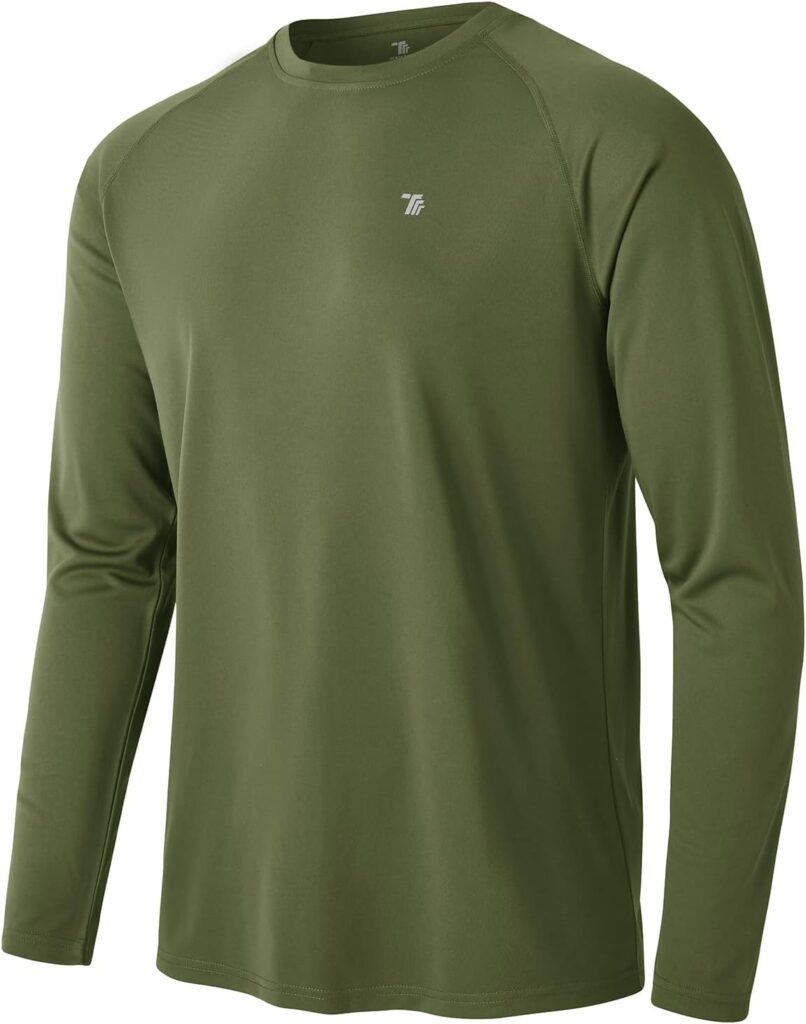

2. 33,000ft Men’s Long Sleeve Sun Protection Shirt
Pros:
- Offers UPF50+ Sun Protection, blocking harmful rays and ensuring all-day comfort.
- Breathable & quick-dry fabric with high-tech air vent keeps you cool and dry.
- Water-resistant and wrinkle-free material makes it perfect for travel and outdoor activities.
- Functional design with 2 chest utility pockets, sunglasses loop, and a built-in glasses cleaning cloth.
Cons:
- The price point may be slightly higher compared to similar products.
- Roll-up sleeve feature, while versatile, may not be necessary for all users.
3. Men’s Waterproof Tactical Shorts
Pros:
- Crafted from durable and quick-dry nylon spandex, suitable for harsh environments.
- Advanced water repellent technology and UPF 50+ sun protection.
- Multiple pockets for safe storage of essentials.
- Versatile for daily wear and various outdoor activities.
Cons:
- The 3.8-star rating indicates mixed customer satisfaction.
- Lack of included belt might be inconvenient for some users.
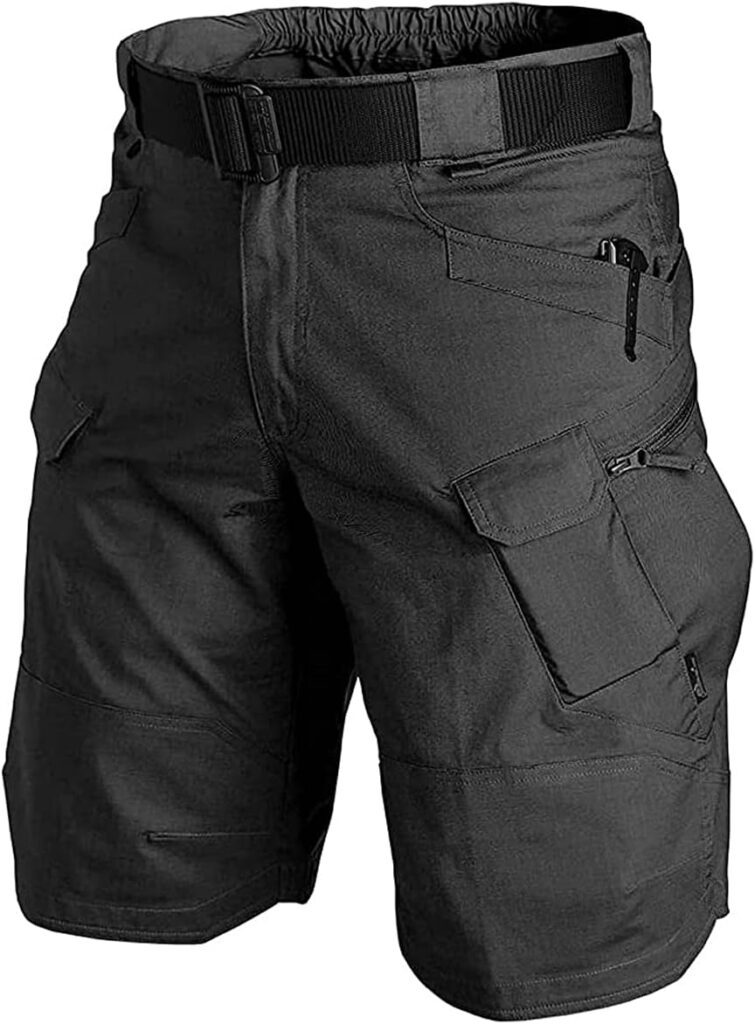
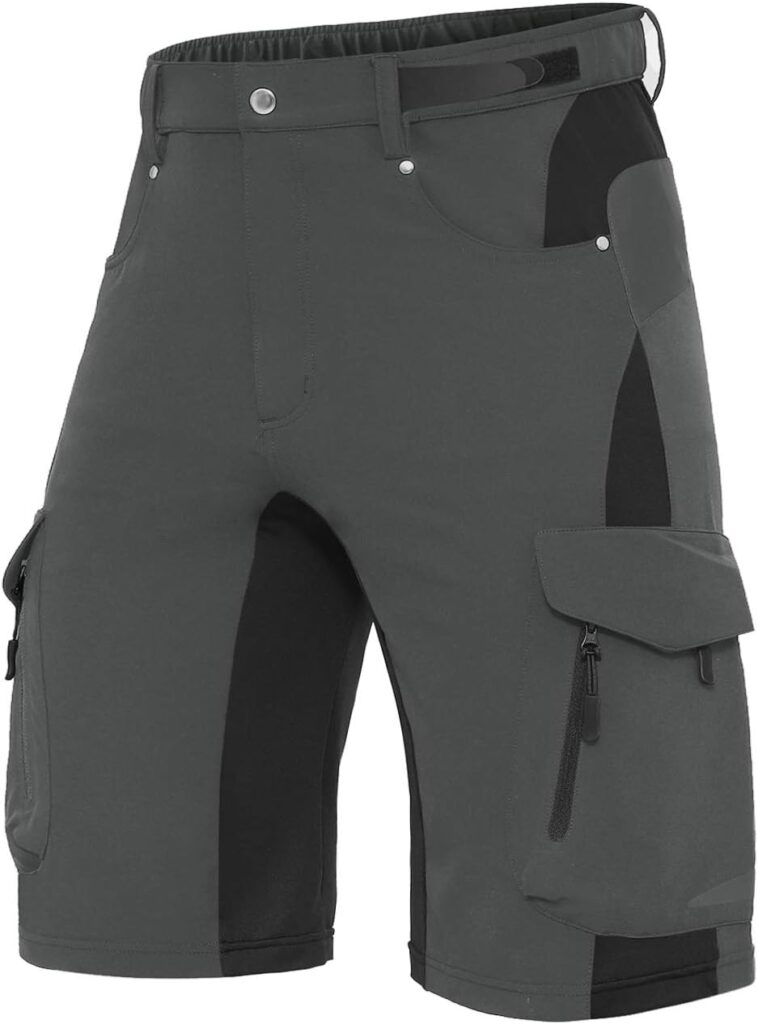
4. XKTTAC Men’s Outdoor Quick Dry Shorts
Pros:
- Six pockets with reflective design enhance utility and safety.
- Elastic and adjustable waistband for a better fit.
- Breathable, quick-dry fabric with UPF 50+ protection.
- Lightweight yet durable material, ideal for a wide range of outdoor activities.
Cons:
- Some users may find the pocket placement less intuitive.
- Reflective strips may not be a necessary feature for all users.
5. TBMPOY Men’s Lightweight Hiking Travel Pants
Pros:
- Quick-dry fabric is lightweight, breathable, and moisture-wicking.
- 4-way stretch fabric ensures maximum flexibility and ease of movement.
- Two large security zipper pockets provide safe storage for essentials.
- Elastic waist with drawstring offers an adjustable fit, suitable for various outdoor activities.
Cons:
- Some users might prefer a traditional button closure over a drawstring.
- The “No Show” rise style may not appeal to all preferences or fit all body types comfortably.
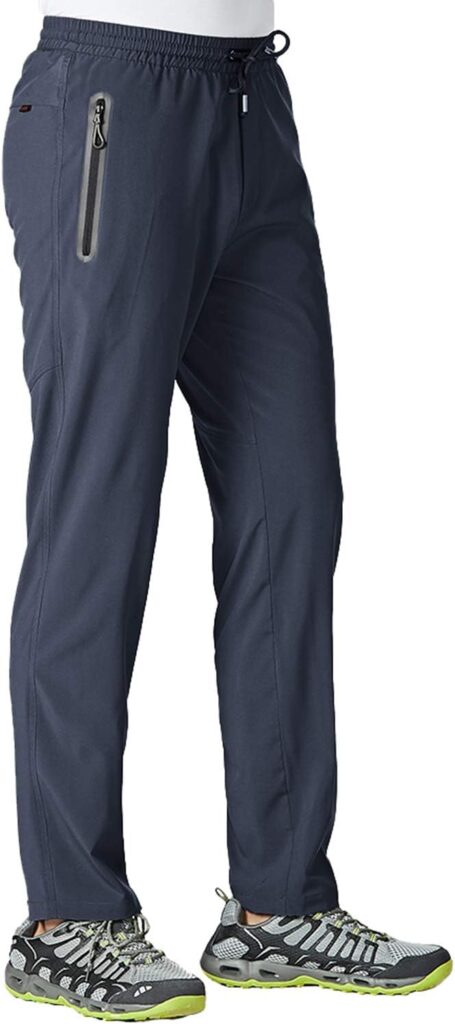
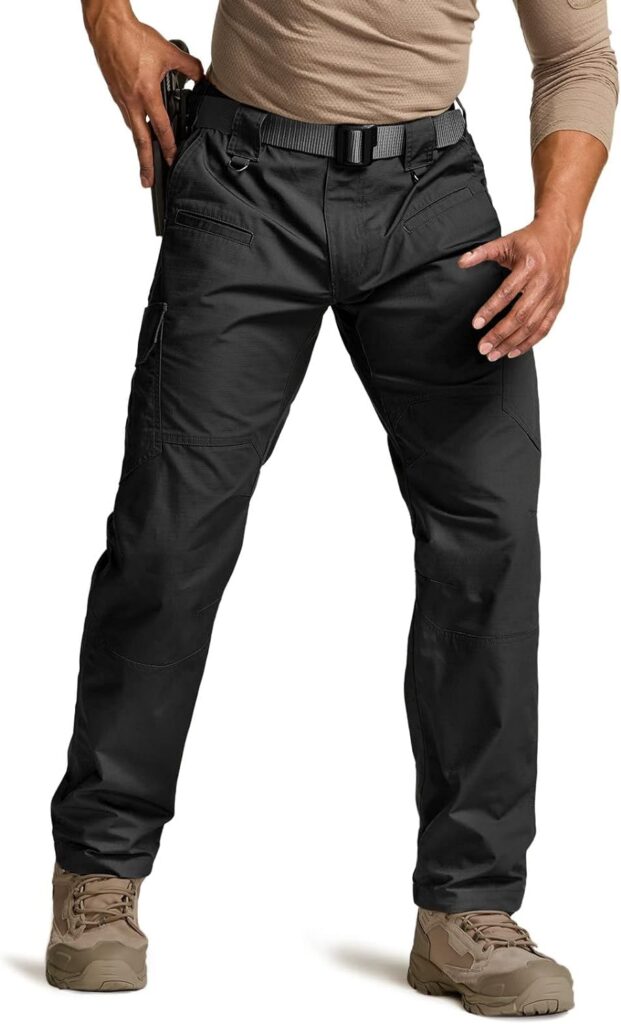
6. CQR Men’s Tactical Pants
Pros:
- Blend of Polyester & Cotton (Ripstop Fabric) combines breathability, wrinkle resistance, and comfort.
- Duratax Ripstop fabric provides excellent durability along with water and stain resistance.
- Elastic waistband and tactical layout with multi-purpose cargo pockets enhance functionality and fit.
- High durability suitable for law enforcement, military, and extensive outdoor activities.
Cons:
- Tactical belt not included, which might require an additional purchase.
- May be too specialized for casual hikers or those seeking lightweight options.
7. Wespornow Men’s Convertible Hiking Pants
Pros:
- Versatile zip-off design easily converts pants to shorts, suitable for changing weather conditions.
- Made with 90% Polyester and 10% Spandex, offering a quick-dry, breathable fabric.
- Equipped with multiple pockets, including a secure zip-closed rear pocket.
- Adjustable waistband and hem for a comfortable fit, with practical L and R zipper labels.
Cons:
- Convertible zippers may be prone to wear or discomfort in certain outdoor activities.
- Some users might prefer non-convertible options for specific climates or terrains.
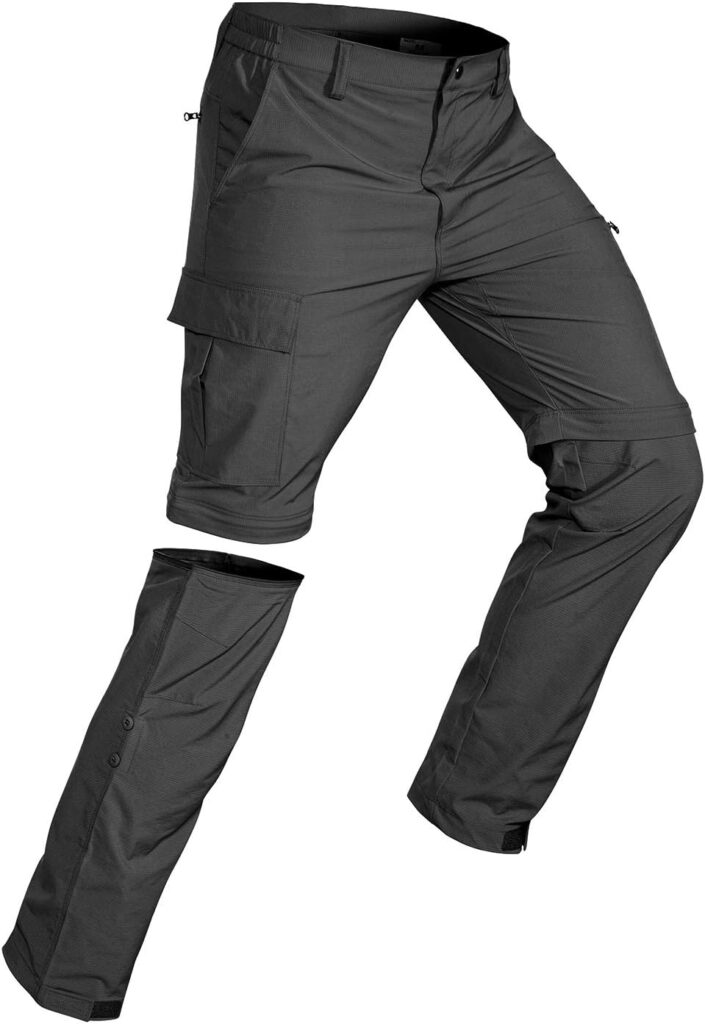
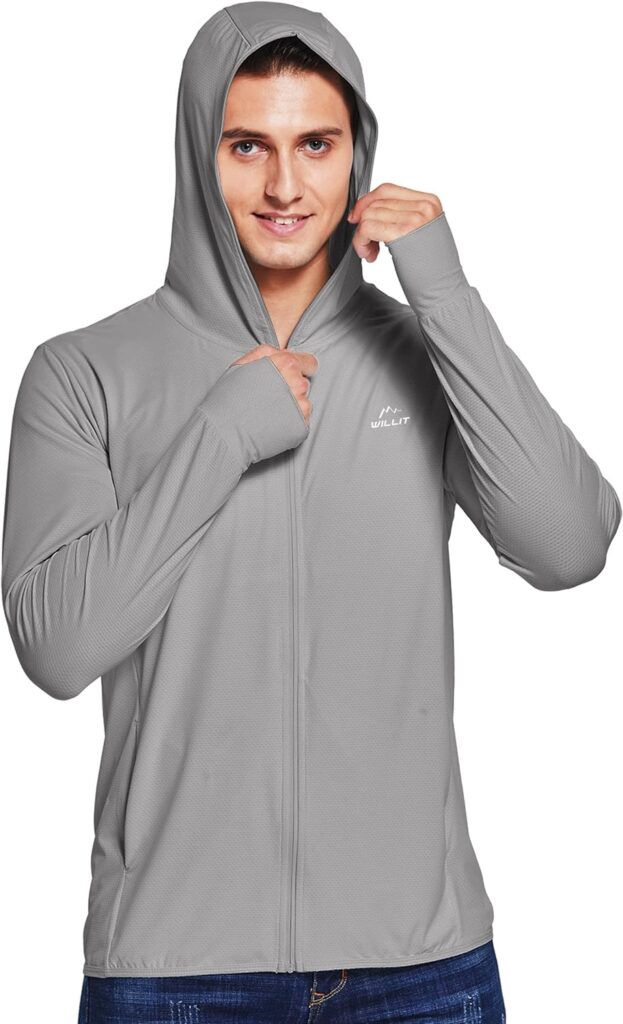
8. Willit Men’s UPF 50+ Light Jacket
Pros:
- Fabric rated UPF 50+ for excellent sun protection, blocking 98% of harmful UV rays.
- Features include a moisture-wicking high-density mesh fabric, hoodie design for neck protection, and thumbholes for extended hand coverage.
- Comes with hand and inner deep pockets for secure storage of essentials.
- Versatile for various outdoor activities with a lightweight, quick-drying, and stretchable fabric.
Cons:
- Hand wash only, which might be inconvenient for frequent outdoor use.
- Limited color options may not meet everyone’s preference.
9. TEZO Men’s Rain Jacket
Pros:
- 100% Polyester with professional waterproof coating and fully sealed seams for effective water isolation.
- Windproof and breathable design, with a detachable hood and adjustable velcro cuffs for enhanced weather protection.
- Multiple pockets with seal tape for secure, waterproof storage.
- Suitable for a wide range of outdoor activities, offering year-round usability.
Cons:
- Hand wash only care may deter some users.
- Some may find the jacket too lightweight for extreme cold conditions.
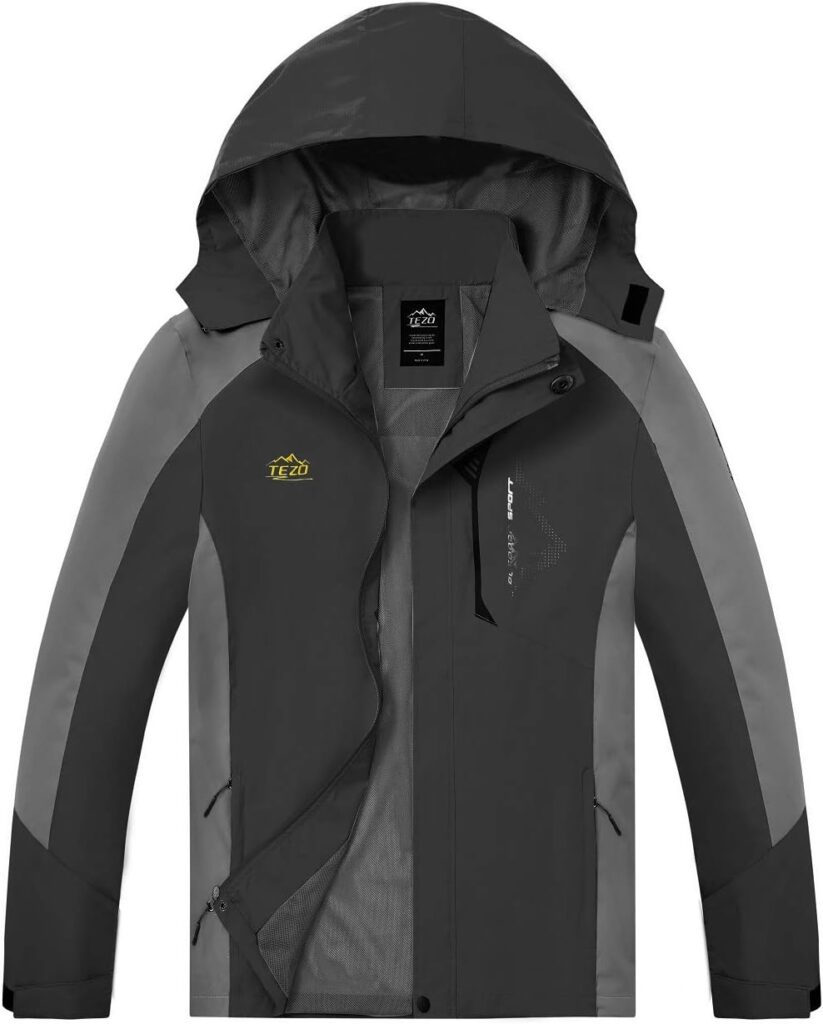
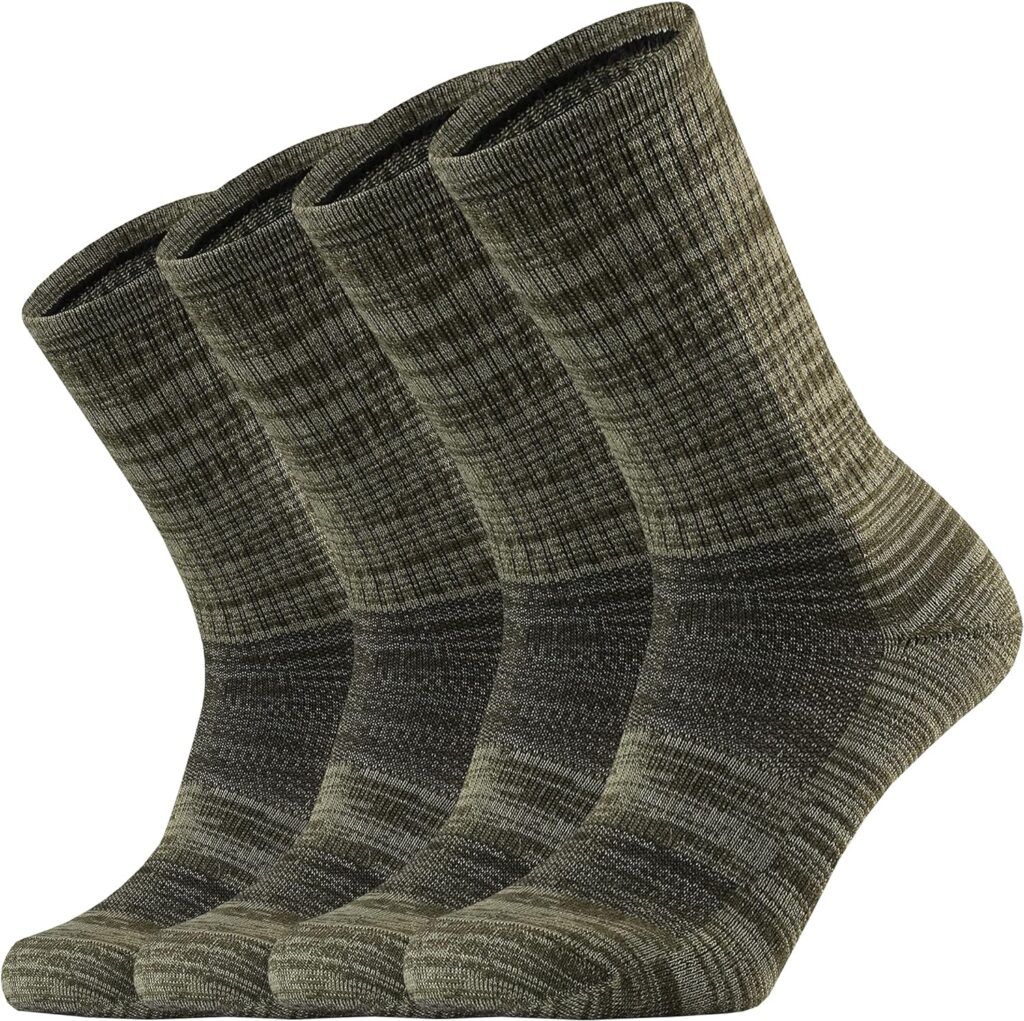
10. Ortis Men’s Merino Wool Cushion Crew Socks
Pros:
- Made with a blend of Merino Wool, Acrylic, Polyester, and Spandex, providing breathability and comfort across all seasons.
- Reinforced heel and toe areas for increased durability and protection in extreme environments.
- Moisture control and odor control properties keep feet fresh and dry.
- Extra cushioned sole reduces feet pain and helps avoid blisters during extensive outdoor activities.
Cons:
- The price per pair might be considered high compared to standard hiking socks.
- Some users might prefer thinner options for specific activities or warmer climates.
Women’s Hiking Gear Review
Whether you’re an avid hiker, golfer, or enjoy spending time outdoors, having the right attire is crucial for comfort, protection, and functionality. We’ve reviewed five products designed for women who love the outdoors, focusing on shorts, pants, and a sun protection shirt. Here’s what you need to know about each product to make an informed decision.
1. Libin Women’s Lightweight Hiking Shorts
Pros:
- Made from a blend of 88% Nylon and 12% Spandex, offering a lightweight, breathable, and quick-dry experience with water resistance.
- UPF 50+ provides excellent UV protection.
- Features six multipurpose pockets for ample storage.
- The elastic side panels and 2″ wide belt loop waistband ensure a secure and comfortable fit.
Cons:
- Hand wash only, which might be inconvenient for those who prefer machine washable options.
- The 10″ inseam length may not suit everyone’s taste or comfort preference.
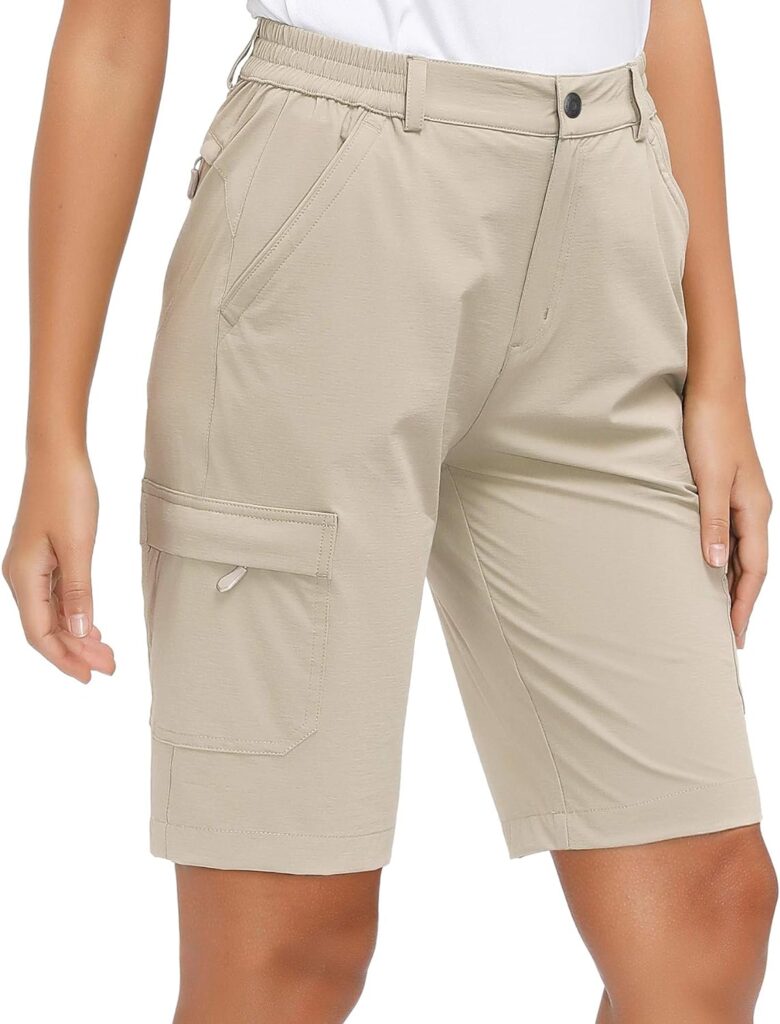
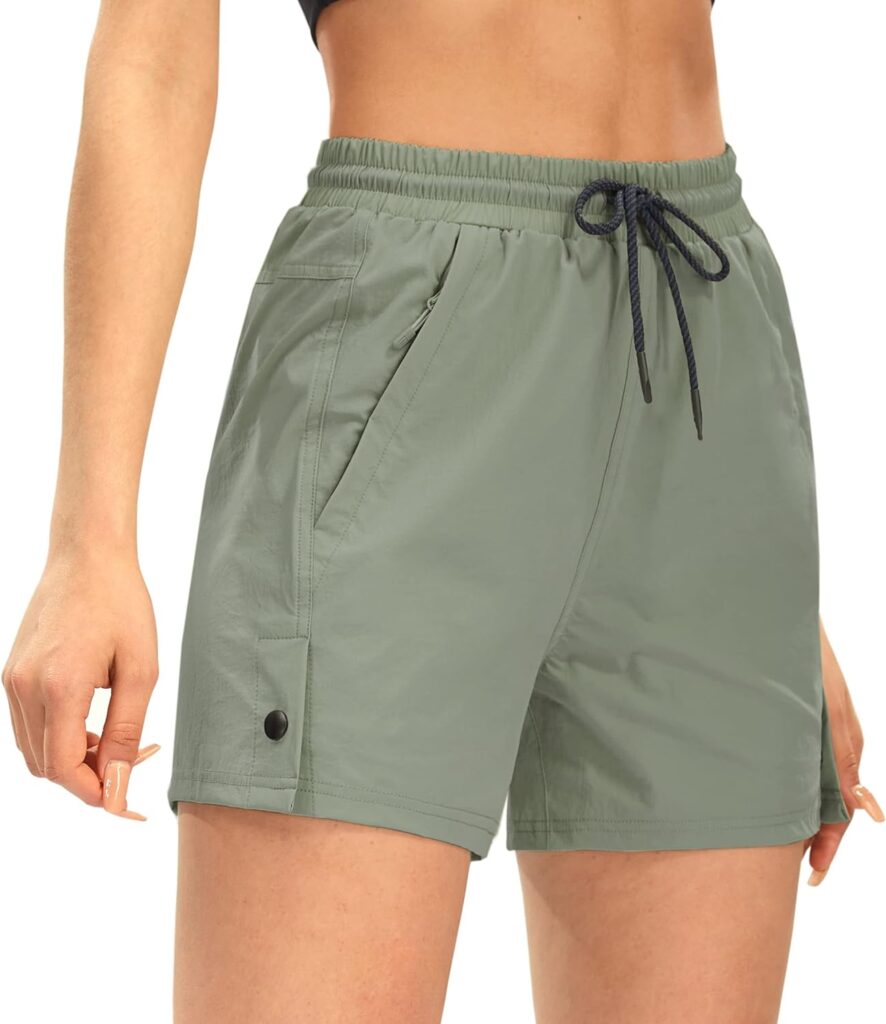
2. AFITNE Women’s 4″ Hiking Shorts
Pros:
- Super lightweight fabric with a slight elasticity for quick drying and cooling.
- Elastic waistband with drawstring for an adjustable fit, and snap button split hem for extra mobility.
- Offers UPF 50+ sun protection and water resistance.
- Features 2 side zipper pockets for secure storage.
Cons:
- The 4″ length might be too short for certain outdoor activities or personal preferences.
- Hand wash only could be seen as a drawback for maintenance.
3. Women’s Hiking Pants Convertible
Pros:
- 100% Polyester fabric offers quick-drying capabilities and elasticity for comfort and movement.
- Convertible design with zip-off legs for versatility in changing weather conditions.
- Features an adjustable exterior waistband and a breathable, zipper closure for comfort.
- Provides sun protection, making it ideal for various outdoor activities.
Cons:
- Some might find the loose fit less flattering or too baggy for their liking.
- The drawstring closure may not be as durable or secure as a button or snap closure.
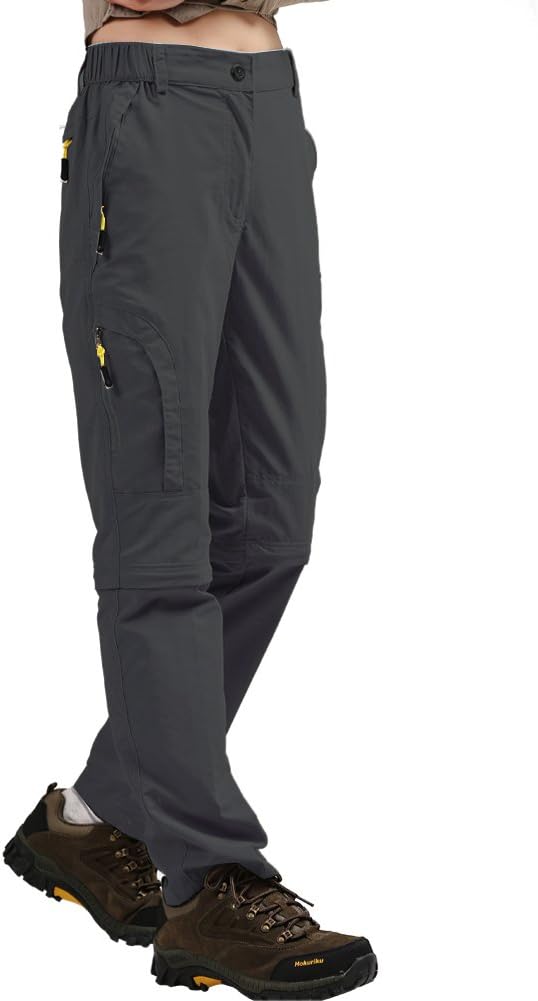
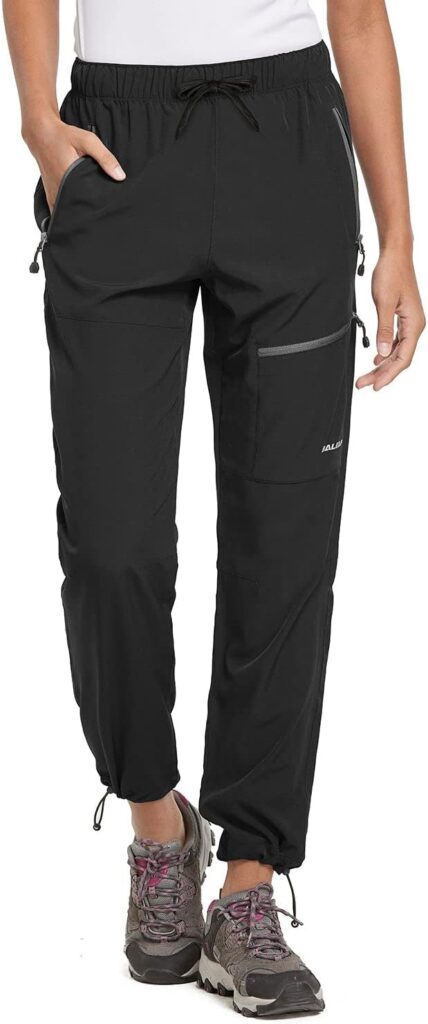
4. BALEAF Women’s Hiking Pants
Pros:
- Crafted with 90% Polyester and 10% Spandex, these pants are lightweight, breathable, and offer quick-dry and water-resistant properties.
- Built-in UPF 50+ for high-level sun protection.
- Features four zip-closure security pockets and an elastic waist with drawstring for convenience and fit.
- Adjustable cord locks around cuffs enhance fit and protection.
Cons:
- While machine washable, the specific care instructions may vary.
- Some may prefer a more traditional button or zipper fly closure over a drawstring.
5. TBMPOY Women’s UPF 50+ Sun Protection Hoodie Shirt
Pros:
- 100% Polyester fabric is lightweight, moisture-wicking, and quick-drying for optimal comfort.
- Offers UPF 50+ protection against harmful sun rays.
- Includes low-profile thumbholes to keep sleeves in place and trap warmth.
- Flatlock seamlines and no tag collar for reduced chafing.
Cons:
- Pull-on closure might not be preferred by those looking for zippered or buttoned options.
- The color selection and style may not cater to all personal preferences.
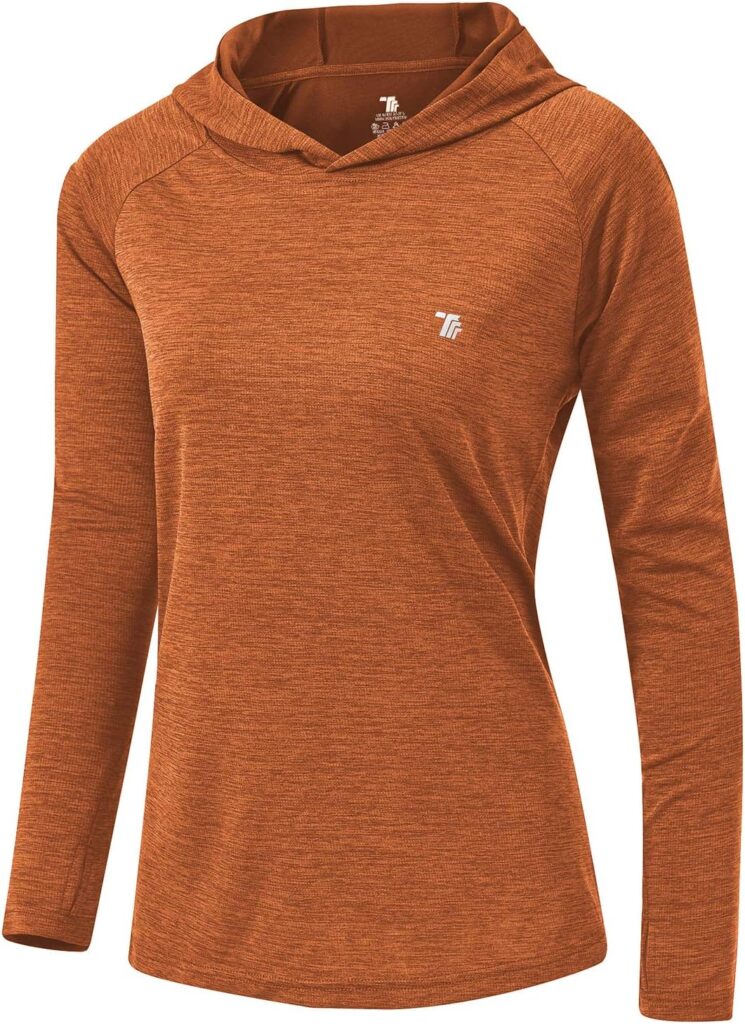
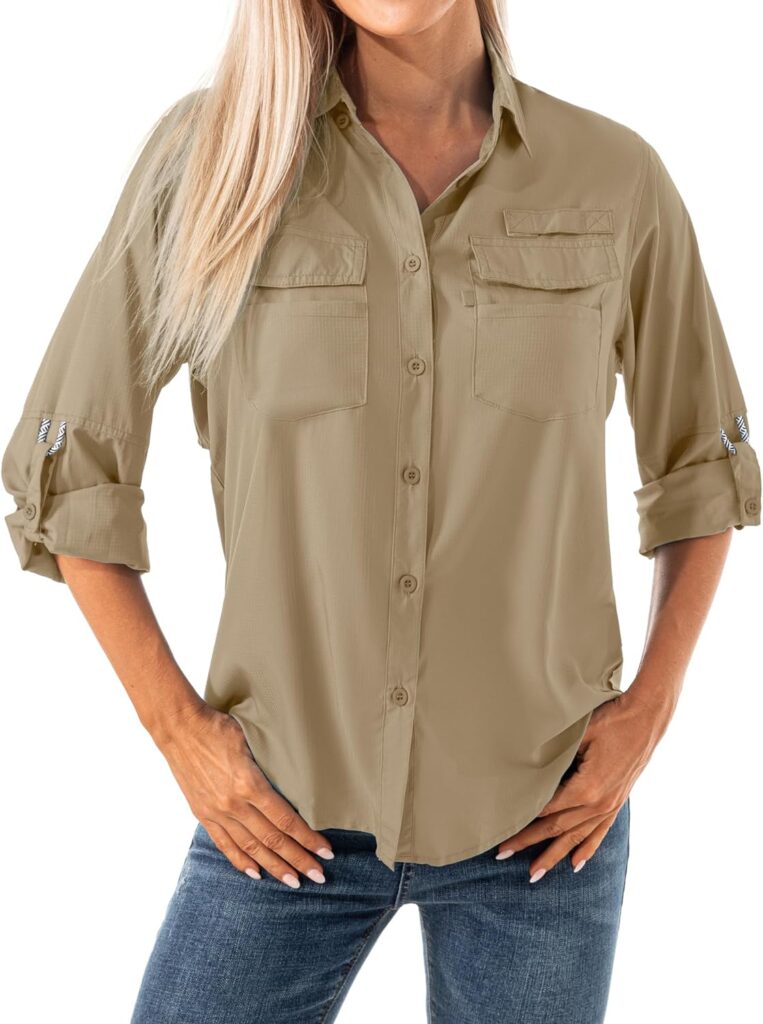
6. Women’s Quick Dry Sun UV Protection Convertible Long Sleeve Shirts
Pros:
- Offers Omni-Shade UPF 50 fabric for maximum sun protection.
- Features Omni-Wick technology that pulls moisture away, keeping you cool and dry.
- Includes two chest pockets with closure and one sunglasses hanger loop for convenience.
- Mesh-lined vented back for breathability and roll-up sleeves for versatility.
Cons:
- Only available in one color option, which might limit style preferences.
- Button-down closure may not be as quick or easy to manage as other fastenings for some.
7. BALEAF Women’s Rain Jackets Waterproof Windbreaker
Pros:
- 100% waterproof with a fully seam-sealed design, suitable for over 5000mm pressure head.
- Lightweight and packable, ideal for carrying on the go.
- Features a ventilation system in the back for enhanced breathability.
- Includes five utility pockets for ample storage space.
Cons:
- Hand wash only, which may be inconvenient for those preferring machine washable options.
- The fit might be too snug or too loose for some, depending on body type.
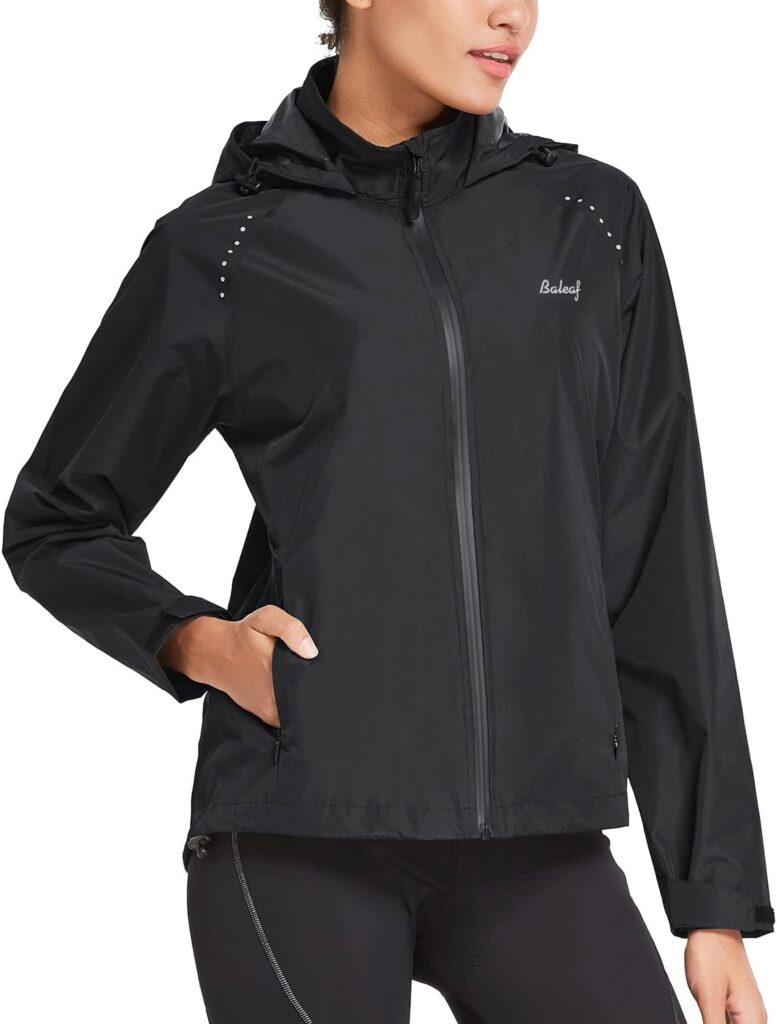
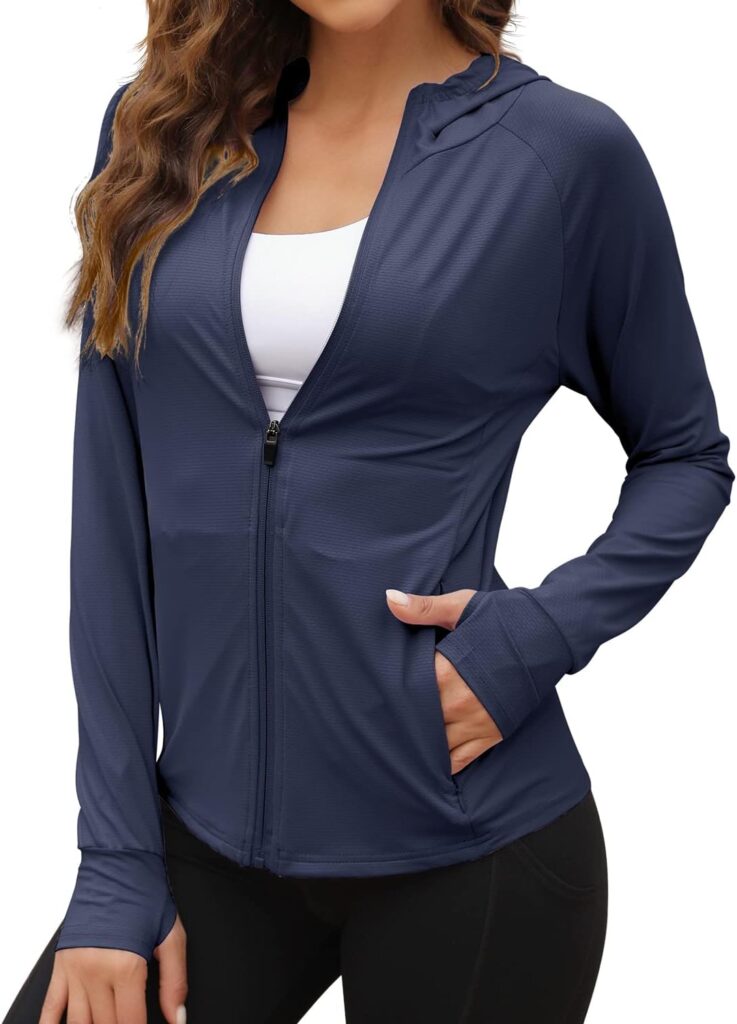
8. We1Fit Women’s UPF 50+ Sun Protection Jacket Hoodie
Pros:
- Certified UPF 50+ lightweight jackets provide excellent sun protection.
- High-density mesh fabric is lightweight, breathable, and quick-drying.
- Features two zipper pockets and thumbholes for convenience and added protection.
- Versatile for various outdoor activities with a zip-up hooded design.
Cons:
- Limited color options may not suit all personal preferences.
- The fabric’s breathability might vary under extreme conditions.
9. Little Donkey Andy Women’s Waterproof Rain Jacket
Pros:
- Waterproof and windproof with DWR Finish and PU coated membrane.
- Adjustable fit features including attached hood, hook-and-loop cuffs, and elastic drawcord hem.
- Lightweight and breathable with a strong mesh lining.
- Roomy pockets for secure storage of essentials.
Cons:
- The golden color may not appeal to everyone or be suitable for all outdoor settings.
- Some users might find the jacket’s waterproofing less effective in heavy rain conditions over time.
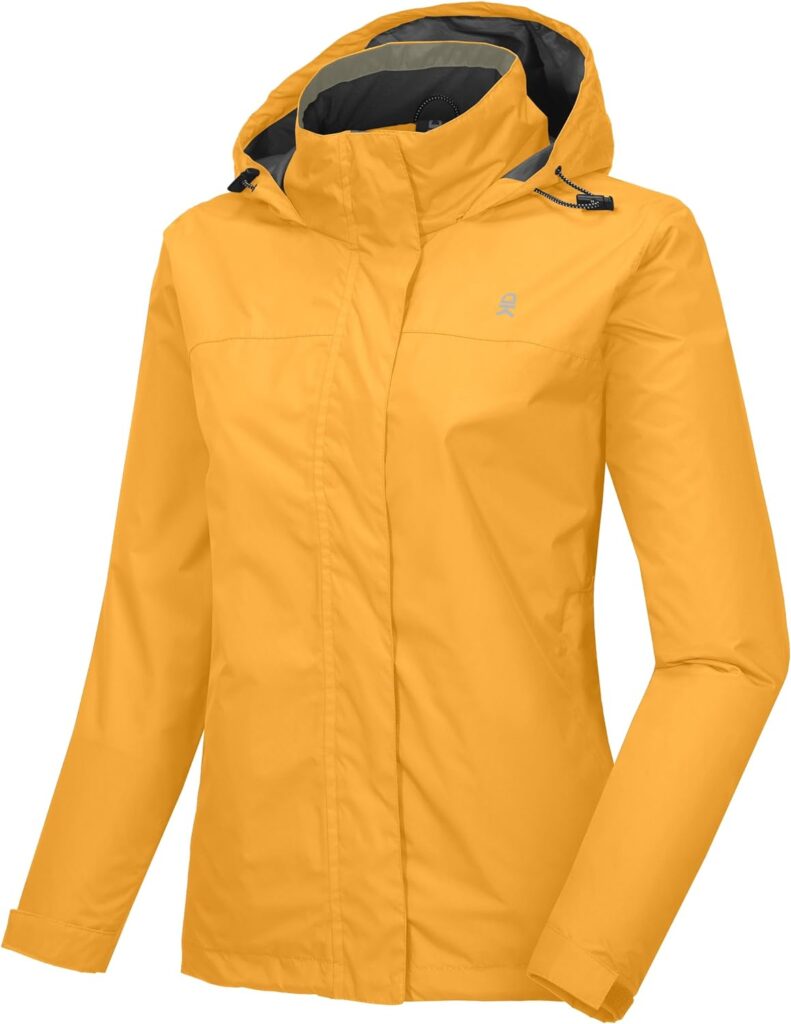
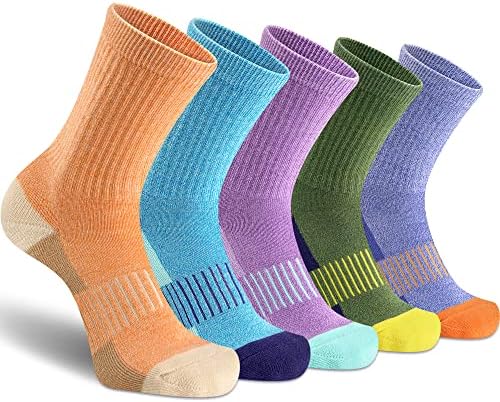
10. Gonii Women Socks Hiking Running Thick Cushion Athletic Crew Socks
Pros:
- Arch support design reduces fatigue and discomfort during prolonged wear.
- Moisture-wicking and breathable material keeps feet dry and comfortable.
- Cushioned mid-calf for shock absorption and reduced fatigue.
- Durable, comfortable materials designed for long-lasting wear.
Cons:
- The size range may not accommodate all foot sizes perfectly.
- Some users may find the thickness too much for very hot weather conditions.
Mistakes to Avoid When Choosing a Hiking Dress
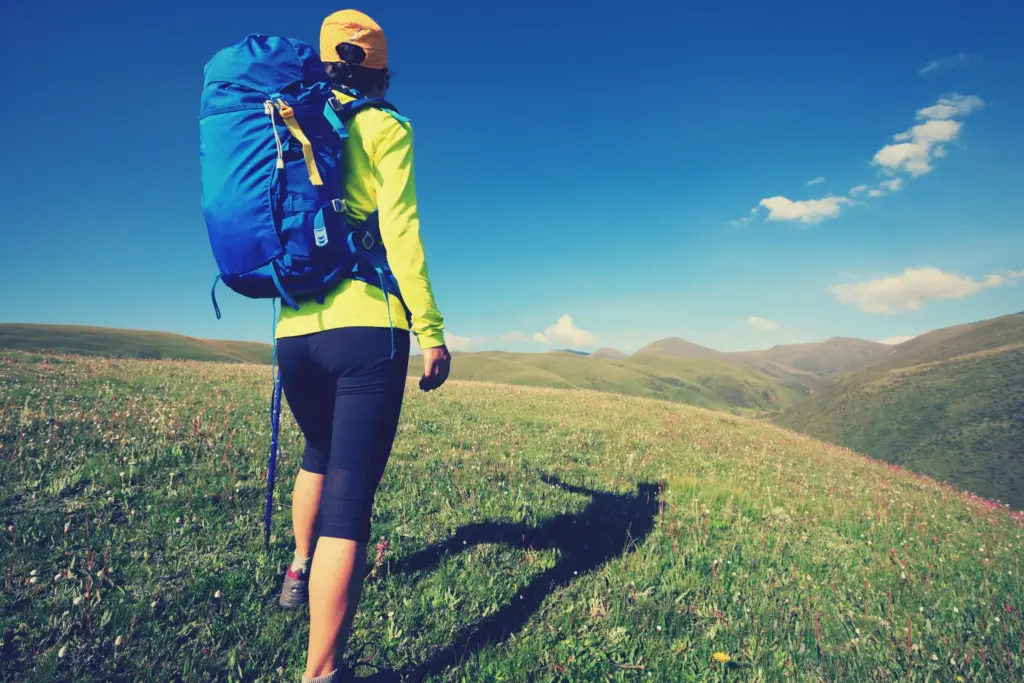
Selecting the ideal hiking dress is a critical step towards ensuring a comfortable and enjoyable outdoor adventure. However, many enthusiasts, especially those new to hiking, can easily fall into common traps during the buying process. Understanding these pitfalls and knowing how to avoid them can significantly enhance your hiking experience.
Common Pitfalls and How to Avoid Them
Not Trying Before Buying
- The Problem: Sizes and fits vary widely across different brands and styles. A dress that looks perfect on paper might not fit well in reality, potentially causing discomfort or restricting movement on the trail.
- The Solution: Always try on hiking dresses before making a purchase. Wear the same undergarments and base layers you plan to hike in to get a true sense of the fit and comfort. If shopping online, look for retailers with good return policies that allow you to try on at home and return if the fit isn’t right.
Ignoring Layering
- The Issue: A dress might feel comfortable when tried on alone but become too tight or restrictive when layered with thermals, fleece, or waterproof gear, which are often necessary for changing weather conditions on the trail.
- How to Avoid: When trying on hiking dresses, don’t forget to test them with the layers you expect to wear during hikes. This ensures the dress can accommodate additional clothing without compromising comfort or mobility.
Skimping on Quality for Price
- The Mistake: Opting for a cheaper hiking dress might seem like a good deal at the time, but lower-quality materials and construction can lead to discomfort, poor performance, and a shorter lifespan.
- The Fix: View your hiking dress as an investment in your outdoor activities. High-quality dresses made from durable, functional materials may come with a higher upfront cost but will serve you better and last longer, offering better value over time.
Overlooking Ventilation
- The Oversight: Especially important in warm weather, adequate ventilation in a hiking dress is crucial to prevent overheating and ensure comfort throughout your hike.
- The Correction: Look for hiking dresses designed with breathability in mind, such as those with mesh panels, back vents, or other ventilation features. These design elements help regulate body temperature and keep you cool.
Not Checking for Pockets
- The Underestimation: The absence of pockets might seem like a minor inconvenience, but on a hike, having accessible storage for essentials like snacks, a small map, or your phone can significantly enhance convenience and enjoyment.
- The Strategy: Prioritize dresses with well-placed, secure pockets. Even if you carry a backpack, having key items within easy reach can be extremely helpful. Consider dresses with zippered or buttoned pockets to secure your items.
Personal Recommendations
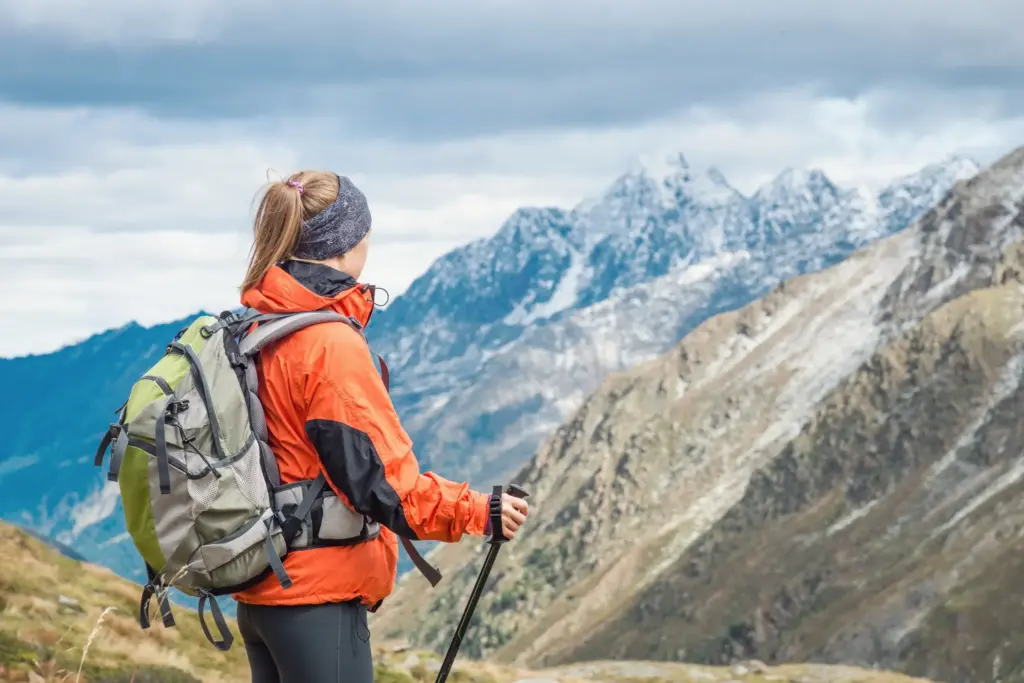
As avid hikers and the proud owners of our outdoor-focused blog, my wife and I have spent years exploring trails and testing gear to enhance our hiking experiences. Through countless adventures, we’ve learned that the right equipment not only improves comfort and protection but also elevates the joy of each trek. Below, we share our insights on a selection of hiking attire and gear that has stood out for its functionality, durability, and comfort. Whether you’re navigating rugged terrains or enjoying a leisurely path, these recommendations aim to help you make informed choices for your outdoor adventures.
Men’s Hiking Apparel and Accessories Insights
1. TBMPOY Men’s Hiking Shirts
- Pros: Crafted from 100% Polyester for a light, moisture-wicking experience. Features UPF 50+ sun protection, raglan sleeves for increased mobility, and a no-tag collar for added comfort.
- Cons: Limited color range and the potential for less breathability in extreme heat.
2. 33,000ft Men’s Long Sleeve Sun Protection Shirt
- Pros: UPF50+ protection, breathable fabric with air vents, water-resistant and wrinkle-free, equipped with practical pockets and a sunglasses loop.
- Cons: Higher price and possibly unnecessary roll-up sleeves feature.
3. XKTTAC Men’s Outdoor Quick Dry Shorts
- Pros: Features six pockets, breathable fabric, and UPF 50+ protection. Lightweight and suitable for a variety of activities.
- Cons: Pocket placement and reflective strips may not appeal to all.
4. Wespornow Convertible Hiking Pants
- Pros: Versatile zip-off design for pants-to-shorts conversion, breathable and quick-dry material, with practical pockets and adjustable fit.
- Cons: Potential issues with zipper durability; not everyone prefers convertible pants.
5. TEZO Rain Jacket
- Pros: 100% Polyester waterproof and windproof fabric, breathable with a detachable hood and adjustable features for weather protection, suitable for year-round outdoor activities.
- Cons: Requires hand washing; may be too light for very cold weather.
6. Ortis Merino Wool Socks
- Pros: Blend of Merino Wool and synthetics for breathability and comfort, reinforced durability, moisture and odor control, cushioned sole for reduced foot pain.
- Cons: Higher price; some might find them too thick for hot weather or prefer thinner options.
Women’s Hiking Gear Insights
1. Libin Women’s Lightweight Hiking Shorts
- Pros: A blend of Nylon and Spandex provides a breathable, quick-dry experience with UPF 50+ sun protection. Includes multiple pockets for utility.
- Cons: Hand wash only and the inseam length may not suit all preferences.
2. Women’s Hiking Pants Convertible
- Pros: Versatile zip-off legs for changing weather, breathable Polyester fabric, and sun protection. Adjustable for comfort.
- Cons: Some may find the fit too loose and the drawstring closure less durable.
3. Quick Dry Sun UV Protection Convertible Long Sleeve Shirts
- Pros: Features UPF 50 fabric for maximum sun protection and moisture-wicking technology to keep you cool and dry. Includes practical chest pockets and a sunglasses loop for convenience.
- Cons: Limited to one color option, which might not suit all style preferences. Button-down closure may be less convenient for quick changes.
4. Little Donkey Andy Waterproof Rain Jacket
- Pros: Offers waterproof and windproof protection with a durable water-repellent finish. Adjustable design elements like the hood and cuffs provide a custom fit. Lightweight and breathable with ample pocket space for essentials.
- Cons: The specific golden color option may not appeal to all, and some users have reported decreased waterproofing effectiveness over time.
5. Gonii Women’s Thick Cushion Athletic Crew Socks
- Pros: Designed with arch support to reduce fatigue, these socks are made from moisture-wicking and breathable material to keep feet dry and comfortable. Cushioned for shock absorption and durability.
- Cons: The range of sizes may not fit all users perfectly, and some might find the socks too thick for very warm conditions.
Our curated list reflects years of personal experience and a passion for the great outdoors. While we’ve found these items to be outstanding, we always encourage fellow hikers to prioritize their comfort and needs when selecting gear. Remember, the best hiking attire is one that makes you feel comfortable, protected, and, indeed, fabulous on the trails. Happy hiking!
Care and Maintenance of Your Hiking Dress

A hiking dress can be a significant investment towards your comfort and performance on the trails. Like any specialized outdoor gear, it requires proper care and maintenance to prolong its life and maintain its functionality. By following a few essential care guidelines, you can ensure your hiking dress remains in excellent condition, ready for your next adventure.
Essential Care Guidelines
Reading Care Labels
- First Step: Always start with reading the care label found inside your hiking dress. This label provides specific instructions tailored to the material and construction of the dress, ensuring you don’t inadvertently damage it during cleaning.
- Why It Matters: Different fabrics, from synthetic blends to natural fibers like merino wool, have unique care requirements. Adhering to these instructions is crucial for maintaining the dress’s integrity and performance features.
Washing Practices
- Temperature: Opt for cold water washes to preserve the fibers and functionality of your hiking dress. Cold water is gentle on the material and helps in maintaining the color and shape of the dress.
- Detergent: Use a mild, gentle detergent to avoid harsh chemicals that can degrade the fabric. Look for detergents specifically designed for technical fabrics.
- Fabric Softeners: Steer clear of fabric softeners; they can coat the fibers, diminishing the moisture-wicking and breathability properties of your dress.
- Hand Washing vs. Machine Washing: Whenever possible, hand washing is preferable for gentle cleaning. If using a machine, select a gentle cycle to minimize wear and tear.
Drying Techniques
- Air Drying: The best method for drying your hiking dress is to air dry it. Hanging the dress in a shaded, well-ventilated area preserves its elasticity and prevents heat damage to the fibers.
- Machine Drying: If you must use a dryer, choose the lowest heat setting. Excessive heat can cause shrinkage, damage the fabric, and reduce the effectiveness of any waterproofing treatments.
Stain Removal
- Immediate Attention: Treat stains as soon as possible to prevent them from setting. Use a gentle stain remover suitable for the fabric type.
- Bleach Warning: Never use bleach on your hiking dress. Bleach can weaken fibers, cause discoloration, and strip away any special finishes or treatments.
Proper Storage
- Condition: Ensure the dress is clean and completely dry before storage to prevent mold and mildew growth.
- Method: Hanging your hiking dress is preferred to avoid creases and maintain its shape. If space is an issue, folding gently and storing in a breathable bag can be an alternative.
- Environment: Store in a cool, dry place away from direct sunlight. Exposure to sunlight can fade the fabric over time.
Conclusion
Choosing the right hiking dress is about more than just fashion; it’s about functionality, protection, and comfort. By considering the material, protection needs, and specific trail conditions, hikers can enhance their outdoor experience significantly. Remember, the right dress not only keeps you comfortable and safe but also allows you to focus on enjoying the beauty and challenge of the trail.
FAQs
- Can I wear a regular dress for hiking?
While possible, it’s always best to opt for a dress specifically designed for hiking for maximum comfort and protection. - How often should I replace my hiking dress?
Depending on usage, a quality hiking dress can last for several years. Look for signs of wear and tear. - Are there any color preferences for hiking dresses?
While color is a personal choice, brighter colors can increase visibility, especially in dense forests. - Can I wear my hiking dress casually?
Absolutely! Many hiking dresses are stylish enough for casual outings. - How do I care for my hiking dress?
Always follow the care instructions provided. Typically, avoid harsh detergents and hot dryers.
Resources




